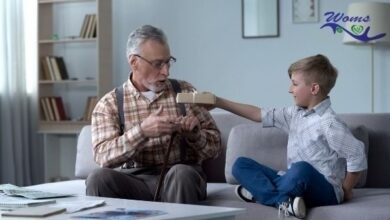Objectophilia: Romantic Attraction to Inanimate Objects

Exploring the Science and Psychology Behind Objectophilia and Famous Examples of the Condition
Objectophilia, also known as object sexuality, is a rare condition characterized by a romantic attraction to inanimate objects. It is a form of paraphilia, which is a type of sexual deviation that involves atypical sexual desires or behavior. It is a controversial and widely misunderstood topic, often depicted in the media as a form of fetishism or as a joke. However, it is a real condition that affects a small percentage of the population and deserves to be explored with sensitivity and respect.
In this article, we will delve into the science and psychology behind objectophilia and examine some famous examples of the condition.
What is Objectophilia?
Objectophilia is a type of attraction in which an individual feels a romantic or emotional connection to an inanimate object, such as a building, a statue, a car, or a piece of furniture. People may feel that the object has a personality, consciousness, or soul, and may have a desire to form a long-term relationship with it.
Objectophilia is a relatively new term and was first coined in the 1970s by Dr. John Money, a sexologist at Johns Hopkins University. Money used the term to describe the attraction of a patient to a steam locomotive. Since then, there have been only a handful of studies conducted on the condition, and it remains largely misunderstood by the public.
What Causes Objectophilia?
The exact causes are still unknown, and there is no single theory that can explain the condition. Some researchers believe that it may be related to a childhood trauma or a lack of emotional attachment in early life. Others suggest that it may be a result of neurodiversity or a unique way of processing sensory information.
One theory suggests that objectophilia may be a form of anthropomorphism, which is the attribution of human characteristics to non-human objects. This theory suggests that people may see the objects as having human-like qualities and may feel a connection to them in the same way they would with another human being.
Is Objectophilia a Mental Disorder?
Objectophilia is not currently recognized as a mental disorder by the Diagnostic and Statistical Manual of Mental Disorders (DSM-5), which is the standard classification of mental disorders used by mental health professionals in the United States. However, it is classified as a form of paraphilia, which is a type of sexual deviation that involves atypical sexual desires or behavior.
It is important to note that not all forms of paraphilia are considered to be mental disorders. For a paraphilia to be considered a mental disorder, it must cause significant distress or impairment in the individual’s life, or involve non-consenting individuals or illegal activities.
Famous Examples of Objectophilia
One of the most famous examples of objectophilia is the case of Eija-Riitta Eklöf-Berliner-Mauer, a woman from Sweden who married the Berlin Wall in 1979. Eklöf-Berliner-Mauer claimed to have fallen in love with the wall when she was just seven years old, and eventually married it in a ceremony in 1979. She stated that she felt a deep emotional and sexual connection to the wall, and continued to visit and care for it even after its destruction in 1989.
Another famous case is the story of Edward Smith, a British man who fell in love with his car. Smith claims to have a romantic and sexual relationship with his white Volkswagen Beetle, which he has named “Vanilla”. He spends most of his time with the car, taking it on long drives and even having romantic dinners with it.
Facts about objectophilia
Objectophilia is a condition where a person develops a romantic or sexual attraction towards inanimate objects. Here are some scientifically proven facts about objectophilia:
- It is a rare condition, and it is not classified as a mental disorder in the Diagnostic and Statistical Manual of Mental Disorders (DSM-5).
- It is not a choice, and individuals with this condition often feel shame and social stigma because of their attraction to objects.
- It is not the same as fetishism or paraphilia, which involve sexual attraction to non-human objects or body parts.
- It can manifest in different ways, such as emotional attachment, romantic love, or sexual desire towards objects like cars, buildings, or even the Eiffel Tower.
- Some may experience a heightened sense of empathy towards the object of their attraction and may believe that the object has consciousness or feelings.
- It can have a negative impact on a person’s social and personal life, and individuals with this condition may benefit from therapy and support groups.
- It is not illegal or harmful to the object of the attraction, as long as it does not involve non-consensual actions or damage to the object.
Conclusion
In conclusion, objectophilia is a rare condition that can cause emotional distress and social stigma. While it is not classified as a mental disorder, individuals with this condition may benefit from therapy and support. It is essential to raise awareness and understanding of this condition to reduce discrimination and promote empathy towards individuals with it.
FAQs
Can someone with Objectophilia have a healthy relationship with a person?
Yes, individuals with Objectophilia can have healthy relationships with others, despite their attraction to objects. However, it may require additional support from partners and therapists.
Are there any support groups or resources for people with Objectophilia?
Yes, there are online support groups, forums, and resources available for individuals with Objectophilia, such as the Objectum Sexuals website and Objectum-Love Yahoo Group. There are also therapists and counselors who specialize in treating this condition.




